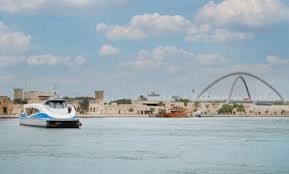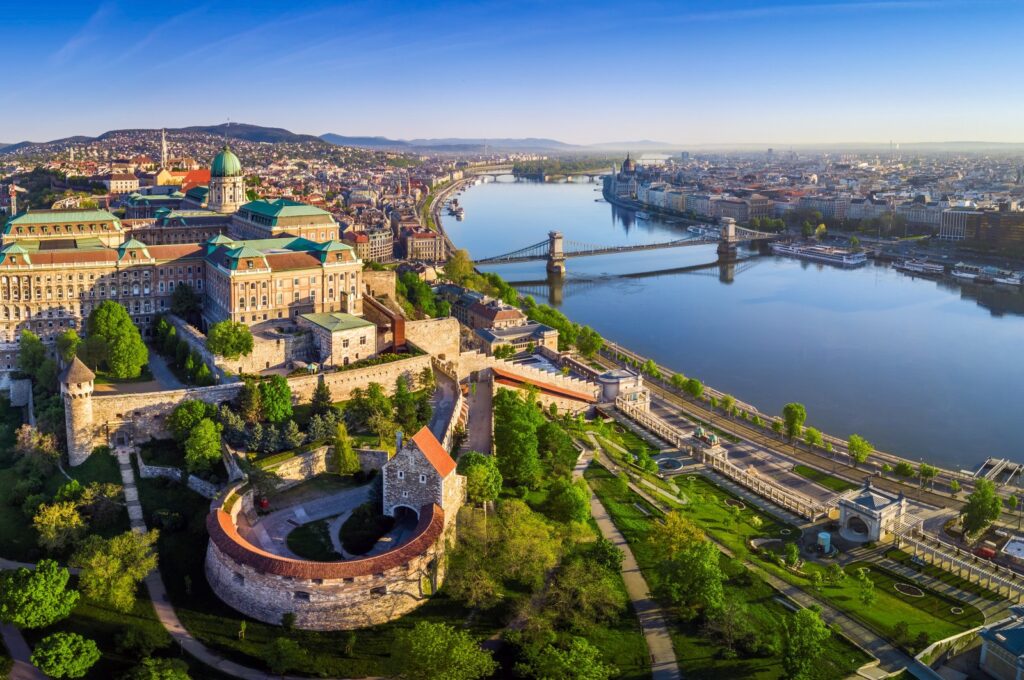
İREM YAŞAR
Understanding Anatolia means discovering human beings and their past experiences. Here’s a quick glimpse into some of the firsts that took place in the region
Anatolia was one of the most sought-after regions in ancient and medieval times due to its location at a point where the continents of Asia and Europe meet. Many civilizations settled, fed their people and sustained their ethnic heritage on these lands throughout history. In addition, the region served as a crossroads of several people who had set off on migrations or to conquer other territories.
This diversity transformed Anatolia into a melting pot of different cultures. People of different religions and races merged together in these lands to form an invaluable mosaic. As a result, a number of world firsts came from these lands. Today, let’s dive into the history of Anatolia a little bit to discover some important firsts from these lands.

Firsts in the world
- Çatalhöyük: The ancient site of Çatalhöyük, which is located in central Konya province’s Çumra district, was once thought to be the oldest settlement in the world until Göbeklitepe was discovered in the southeastern city of Şanlıurfa. However, 12,000-year-old Göbeklitepe is listed as the oldest temple site in human history as it was built as a religious complex.
Çatalhöyük is comprised of two mounds that sit side by side to the west and east. The settlement in the east bears traces of the Neolithic Age, while the one in the west is from the Chalcolithic Age. The site, added to the UNESCO World Heritage List in 2012, sheds light on the history of humanity with its original findings such as the first house structure, the first landscape painting and multiple religious artifacts.
The site is defined as the international key to our understanding of the foundations of civilization and agriculture. UNESCO also describes Çatalhöyük as “a very rare example of a well-preserved Neolithic settlement and has been considered one of the key sites for understanding human prehistory for some decades.”

The most interesting aspect of the settlement is its architecture. It is believed that the Neolithic settlement style and city plan of Çatalhöyük reflect the ideals of equality. Moreover, the discoveries at the site revealed that once a family’s time in a house came to an end, the house was filled with soil and a new one was built on top of it. Through the continuous construction of new houses, a 21-meter (nearly 69-foot) mound was formed over time.
The houses of Çatalhöyük are single-story and one would enter through a hole in the roof via a ladder. Each house consists of a room and a storeroom. The walls were first plastered then covered in a layer of white paint before hues of yellow, red and black were applied.
Çatalhöyük also traces the beginning of mining in Anatolia back to the Neolithic period. It warrants attention with its rich findings that show people of that period were actively farming as well as gathering and hunting. In addition, the terracotta stamp seals found at the site show that today’s concept of property was born at that time.
The recent excavations in Çatalhöyük have also revealed that the site never experienced war, battles or violence for an astounding 4,000 years.

- Göbeklitepe: Crowned as the world’s first temple, the prehistoric site of Göbeklitepe is referred to as the “zero point of history” and was included on the UNESCO World Heritage List at the 42nd World Heritage Committee meeting held on July 1, 2018.
The discovery of the world’s oldest temple was not just shocking but also changed the way archaeologists look at the beginning of civilizations and religions. In line with archaeological studies, we previously believed that agriculture allowed us to settle down, establish civilizations, develop religious teachings and build temples. However, the T-shaped limestone pillars found in Göbeklitepe predate agricultural practices and are one of the first manifestations of human-made architecture on a monumental scale. Decorated with images of wild animals, geometrical figures and a few abstract depictions of humans, and thought to have been used in social events and religious rituals, the monuments reshaped the history of humanity.

The region around Göbeklitepe is vast and has much to reveal. Called Stone Hills, the region features 12 main sites, including Göbeklitepe. Seven of these big and small sites are now excavation sites that will shed light on a crucial yet little-known period of history. Turkey will launch excavations in the rest soon, and many mysteries will be brought to light.
- Aizanoi: The ancient city of Aizanoi, which is located in the Çavdarhisar district of western Kütahya province, was included in the UNESCO World Heritage Tentative List in 2012. The ancient city is home to one of the most well-preserved temples dedicated to the Greek god Zeus.
The site, which is often compared to the ancient city of Ephesus on the Aegean in terms of magnificence, features unique spots including public baths, a gymnasium and five bridges. However, its most important structure is the world’s first stock exchange building. In the Macellum area, Roman Emperor Diocletianus issued a decree setting a ceiling price for some goods to combat inflation to many cities in the empire. This decree shows the prices of some 1,500 main items used in trade in the fourth century.

- Ishak Pasha Palace: Located in eastern Ağrı province’s Doğubeyazıt district, Ishak Pasha Palace is one of the rare examples of Ottoman palace structures. Standing tall like an eagle’s nest from a commanding height, it is the last monumental structure that was built in the famous Tulip Era of the Ottoman Empire in the 18th century. The palace was included in the UNESCO World Heritage Tentative List more than 20 years ago.
Ishak Pasha Palace was commissioned by Çolak Andi Pasha in 1685 but was completed in 1784 with the efforts of Çıldır Governor Ishak Pasha. The palace bears traces of Ottoman, Seljuk and Farsi architecture. It is said that the structure was built with white stones from neighboring villages and black stones from Mount Ararat. The walls of the palace, which were constructed with cut stones, are decorated with both Quranic and poetic verses.

However, what is most interesting about the building is that it is the first palace in the world where a central heating system was used. During their work, researchers discovered spaces between the walls, most in the form of earth pipes. Since the channels in the walls were not used to dispel smoke from the fire burning in the palace’s furnace, researchers think they may be traces of a central heating system.
- Arslantepe: Arslantepe in Turkey’s eastern Malatya province is an archaeological site where findings from the Late Chalcolithic era in 5000 B.C. and the Iron Age were found. The mound was added to the UNESCO Tentative List of World Heritage on April 15, 2014.
Home to different civilizations, such as the Hittites, Romans and Byzantines, Arslantepe features a mud-brick palace, sculptures of lions and an overthrown king, in addition to more than 2,000 seals. Most importantly, an adobe palace within the site features the world’s first rain drainage system, while the thousands of seals reveal the structure of the first city-state in Anatolia.

According to UNESCO’s website, Arslantepe is an “exceptional” testimony to the first emergence of a state society in the Near East. “The archaeological site of Arslantepe and its 4th millennium Palace, in particular, are a unique visible testimony to the crucial process of state formation and the transformation of society from egalitarian to hierarchical and politically centralized,” it said.
Firsts in Anatolia

- Menuçehr Mosque: Built after Seljuk Sultan Alparslan won the Battle of Manzikert (Malazgirt) in 1071, the Ebu’l Manuçehr Mosque is the first Turkish mosque in Anatolia. Commissioned by Ebu’l Manuçehr Bey in 1072 and named after him, the structure is in what is today known as the Ani ruins in Kars province. It is one of the oldest Seljuk works for which the plan is known to have survived to the present day.
Built entirely of tuff stone, the mosque is entered through the door in the northwestern corner. There is a second entrance on the northern side of the building that opens to the minaret, which was built in an octagonal plan.

- Yağıbasan Madrassa: The first madrassa built by Turks in Anatolia, Yağıbasan is also the first educational institution where medical training was provided. The madrassa, which was built in 1151 and 1152 in northern Tokat province, is one of the first examples of Anatolian madrassas with closed courtyards, vaulted rooms, a prayer area and iwans that function as a classroom.
The 12th-century madrassa, also known as Çukur Madrassa among locals, was commissioned by Nizamettin Yağıbasan, the sixth ruler of the Danishmendids. The structure is a plain and unadorned example.

- Hattusa: Hattusa, located in the southwest of central Çorum province, is the first known capital of Anatolia. Having once served as the capital to the Hittites, the settlement was included on the UNESCO World Heritage List in 1986. Hattusa was also the first national excavation site in Turkey.
Home to the Alacahöyük excavation site, the city was recognized as an official “Historic National Park” by the Culture and Tourism Ministry in 1988. A Hittite palace, temples, wheat silos and an open-air theater have been unearthed in the city to date.


Hattusa, furthermore, is the city where the world’s first known written treaty (the Eternal Treaty) was signed between the Hittites and the Egyptians. Its urban structure and city fortification stand out as mesmerizing elements today. The rich ornamentation of the Lions’ Gate and the Royal Gate and the ensemble of rock art at Yazılıkaya sanctuary proves the complexity of Hittite rock masonry.
Courtesy: Dailysabah
The post ‘Firsts’ of Anatolia: Land of culture, history and architecture appeared first on The Frontier Post.








